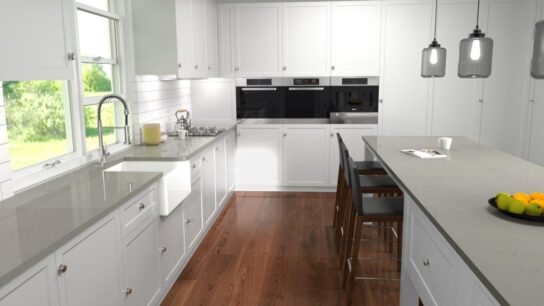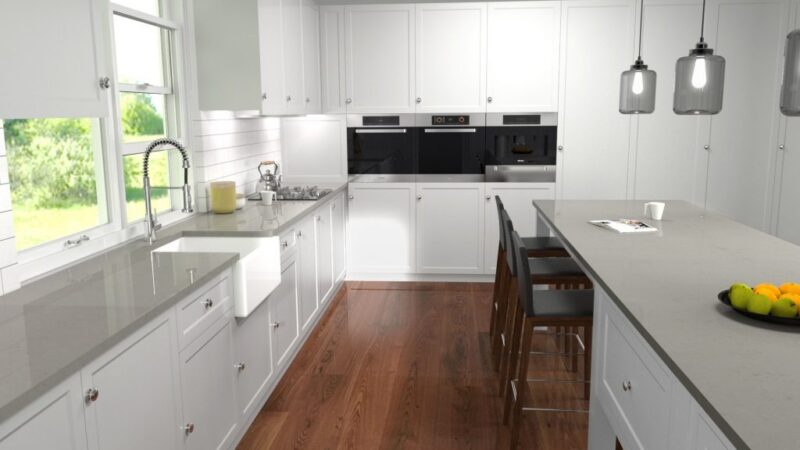Solar flood lights have become increasingly popular due to the fact that they are both environmentally friendly and cost-effective. These lights, which have been made possible by technological breakthroughs, offer efficient illumination for outdoor areas, so improving both safety and aesthetics aesthetically. By gaining an awareness of the most important characteristics, you will be able to select the solar flood lights that are most suitable for your requirements. As a complete guide, the following is a list of the key features that should be looked for in solar flood lights.
1. Brightness (Lumens)
One of the most critical features of solar flood lights is brightness, measured in lumens. In general, the brightness of the light increases with the lumen count. For general outdoor lighting, look for solar flood lights that offer between 1000 to 3000 lumens. Here’s a quick breakdown of what different lumen levels can achieve:
- 500-1000 Lumens: Suitable for small patios or walkways.
- 1000-2000 Lumens: Ideal for medium-sized gardens or entryways.
- 2000-3000 Lumens: Best for large areas, such as driveways or backyards.
Consider your specific lighting needs and the area you want to illuminate when selecting the right lumen output.
2. Battery Capacity
In solar flood lights, the battery is an essential component that must be present. When the battery capacity is increased, the illumination time is also increased. If you want to make sure that your lights can store enough energy to last throughout the night, look for ones that have a minimum of 2000 milliampere-hours (mAh).
Additionally, take into consideration the amount of time required to charge the battery. It takes between six and eight hours of direct sunlight for many solar lamps to fully charge. Furthermore, several versions come equipped with a quick charge function, which enables them to function well with minimal exposure to sunshine.
3. Solar Panel Efficiency
Your flood light’s functionality is directly influenced by the efficiency of the solar panel where it is installed. Look for lights with high-efficiency solar panels, typically monocrystalline or polycrystalline types. Monocrystalline panels are more efficient and take up less space, making them ideal for limited areas.
When assessing solar panel efficiency, consider the wattage and conversion rate. A higher wattage indicates more power generation. For optimal performance, choose lights with solar panels rated between 10-20 watts.
4. Motion Sensor Technology
Motion sensor technology enhances the functionality of solar flood lights, making them more efficient and secure. These lights activate only when movement is detected, conserving energy while providing illumination only when needed.
Look for adjustable motion sensors that allow you to customize detection ranges and durations. A good motion sensor should have a detection range of at least 10-30 feet and an adjustable timer for how long the light remains on after activation.
5. Durability and Weather Resistance
Because solar flood lights are frequently subjected to the environment, it is vital to select models that are both long-lasting and resistant to the elements. You should look for lights that are constructed from high-quality materials that are able to survive tough conditions, such as aluminum or heavy-duty plastic as examples.
The lights should have an IP rating, which stands for “Ingress Protection.” A grade of IP65 or higher indicates that the lights are resistant to dust and water jets, making them appropriate for use in situations where they are exposed to the elements. It is because of this characteristic that your lights will continue to perform well, whether in the rain, snow, or excessive heat.
6. Adjustable Lighting Modes
Many modern solar flood lights come with multiple lighting modes, providing versatility for various needs. Common modes include:
- Always On: The light stays on continuously, ideal for general illumination.
- Dim Mode: The light shines dimly until motion is detected, then brightens.
- Motion Detection: The light turns on when it detects movement and turns off after a set time.
Having adjustable lighting modes allows you to customize the lights based on your specific needs, making them more practical for different situations.
7. Installation and Setup
One of the most important aspects to take into consideration when selecting solar flood lights is how simple they are to set up. Look for lights that come with clear instructions and all necessary mounting hardware. Many solar flood lights are designed for easy DIY installation, requiring no wiring or complicated setups.
Some models offer adjustable brackets or mounts, allowing you to position the lights optimally for maximum sunlight exposure and illumination coverage. Ensure that the installation process is straightforward to save time and effort.
8. Design and Aesthetics
While functionality is essential, the design and aesthetics of solar flood lights also matter, especially if they will be prominently displayed in your yard or garden. Consider lights that complement your outdoor décor and style.
Solar flood lights come in various designs, including traditional floodlight shapes and more decorative lantern styles. You should select a design that may be easily integrated into your outdoor area, so improving its overall appeal while simultaneously delivering illumination that is useful.
9. Warranty and Customer Support
A good warranty and reliable customer support can provide peace of mind when purchasing solar flood lights. Look for products that come with a warranty of at least one year, which can indicate the manufacturer’s confidence in the product’s quality.
Additionally, check if the manufacturer offers accessible customer support, including assistance with installation, troubleshooting, or product replacements. A responsive support team can significantly enhance your overall experience.
10. Price and Value
While price is always a consideration, it’s crucial to evaluate the overall value a solar flood light offers. Higher-priced models may provide better quality, durability, and features, while cheaper options might lack essential functionalities.
Compare different models based on their features, brightness, battery capacity, and materials used. Investing in a quality solar flood light can save you money in the long run through reduced electricity costs and fewer replacements.
Conclusion
Choosing the right solar flood lights can transform your outdoor space, providing safety, security, and aesthetic appeal. By taking into account the essential characteristics described above, you will be able to make an educated choice that caters to your own requirements.
Prioritize brightness, battery capacity, solar panel efficiency, motion sensor technology, and durability when making your choice. With the right solar flood lights, you can enjoy a well-lit outdoor area while contributing to a more sustainable future.



